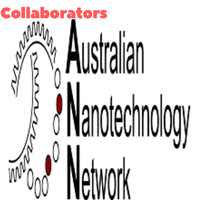
David Passlick
Max Planck Institute for Polymer Research, Germany
Title: Adjuvant combinations in protein-based nanocapsules induce superadditive stimulation of dendritic cells, and highly effective T cells responses
Biography
Biography: David Passlick
Abstract
One aspect of vaccine development is to combine distinctly acting adjuvants to archive superadditive effects on immune cell activation [1, 2]. Moreover, a functional vaccine also requires an antigen source to enable the induction of T cell responses via antigen-presenting cells, particularly dendritic cells (DC), which are capable to activate even naïve T cells.

Figure
Schematic illustration of the project approaches (1) Identification of MDP+R848 as a suitable, superadditive adjuvant combination for BMDC. Soluble as well as particulated delivery induces upregulation of surface activation markers CD80/CD86. (2) Adjuvant delivery via OVA-nanocapsules mediates also strong antigen-specific activation of CD4+ and CD8+ T cells via MHC.
A promising approach to meet this challenge is the application of nanoparticles as a drug-delivery-system. In a first initial step, we analyzed and compared the immunostimulatory potential of different soluble TLR and NLR ligand combinations. We identified resiquimod (R848, specific for TLR7) [3] and muramyldipeptide (MDP, specific for NOD2) [4] as a superadditive stimulatory adjuvant combination. Particulated in spermine-modified dextran-nanoparticles, the combination R848+MDP stimulate murine bone marrow-derived dendritic cells (BMDC) stronger than the soluble adjuvant application. The second step was to combine adjuvants and antigen in one nanocarrier. For this purpose, we encapsulated the experimentally evaluated adjuvant combination (R848+MDP) in well-characterized [5] polymeric nanocapsules, whose shell consists of cross-linked ovalbumin (OVA) protein. OVA is a commonly used model antigen. To assess the capsules’ immunostimulatory potential, we treated BMDC with the adjuvant-loaded nanoparticles. The expression of the surface activation markers CD80/CD86 and the secretion of proinflammatory cytokines were measured by flow cytometry and cytometric bead array, respectively. The capability of the adjuvant-loaded OVA-nanocapsules to mediate OVA-specific T cell responses was assessed by performing T cell proliferation assays with transgenic OT-I (CD8+) and OT-II (CD4+) T cells that recognize OVA-derived antigens. Our data showed that particulated co-delivery of R848 and MDP activates murine BMDC in a superadditive manner as compared with single-delivery of the adjuvants. Additionally, the application of R848+MDP via OVA-nanocapsules evoked a strong antigen-specific T cell proliferation. These results show that R848/MDP-loaded OVA-nanocapsules are highly active to induce superior antigen-specific T cell responses.

